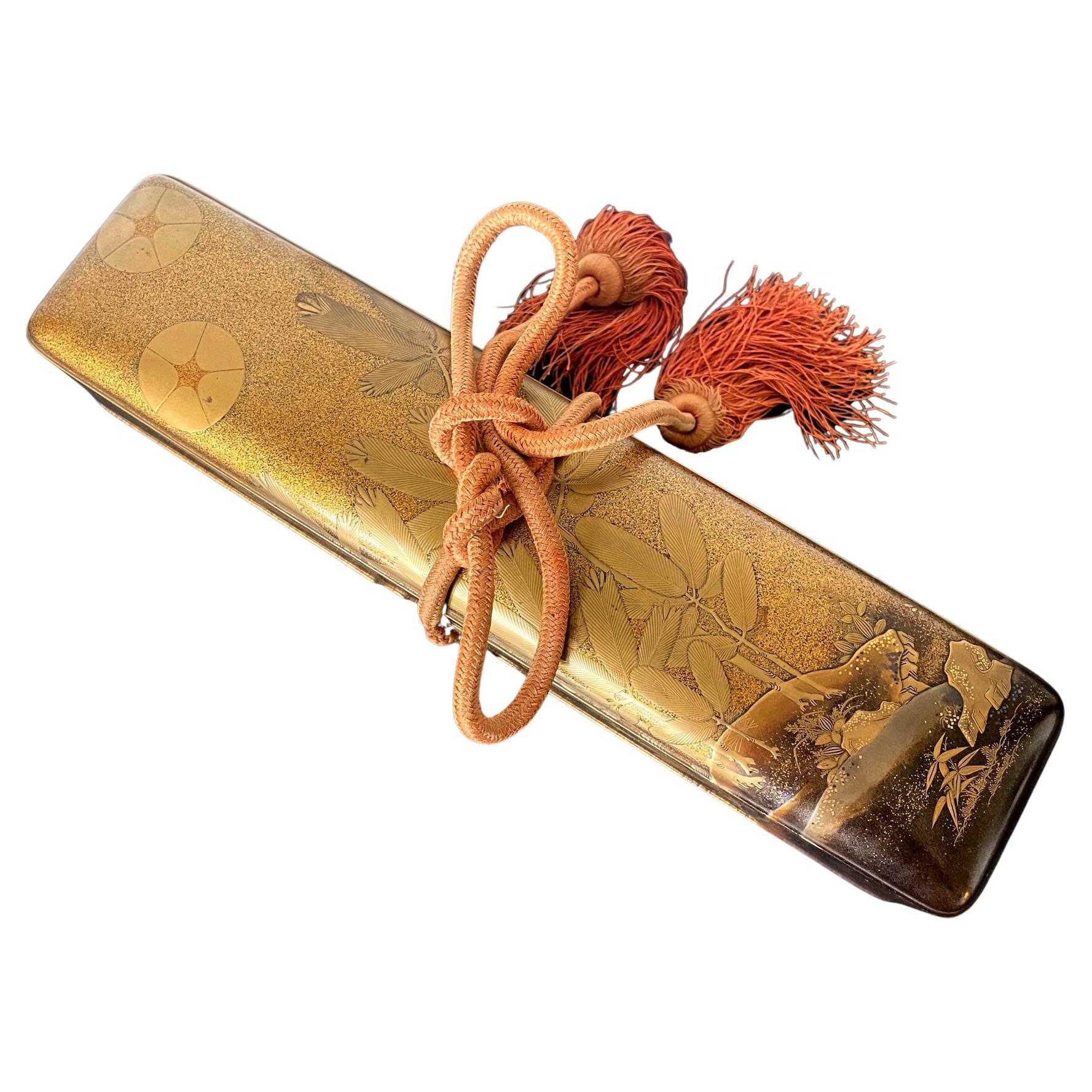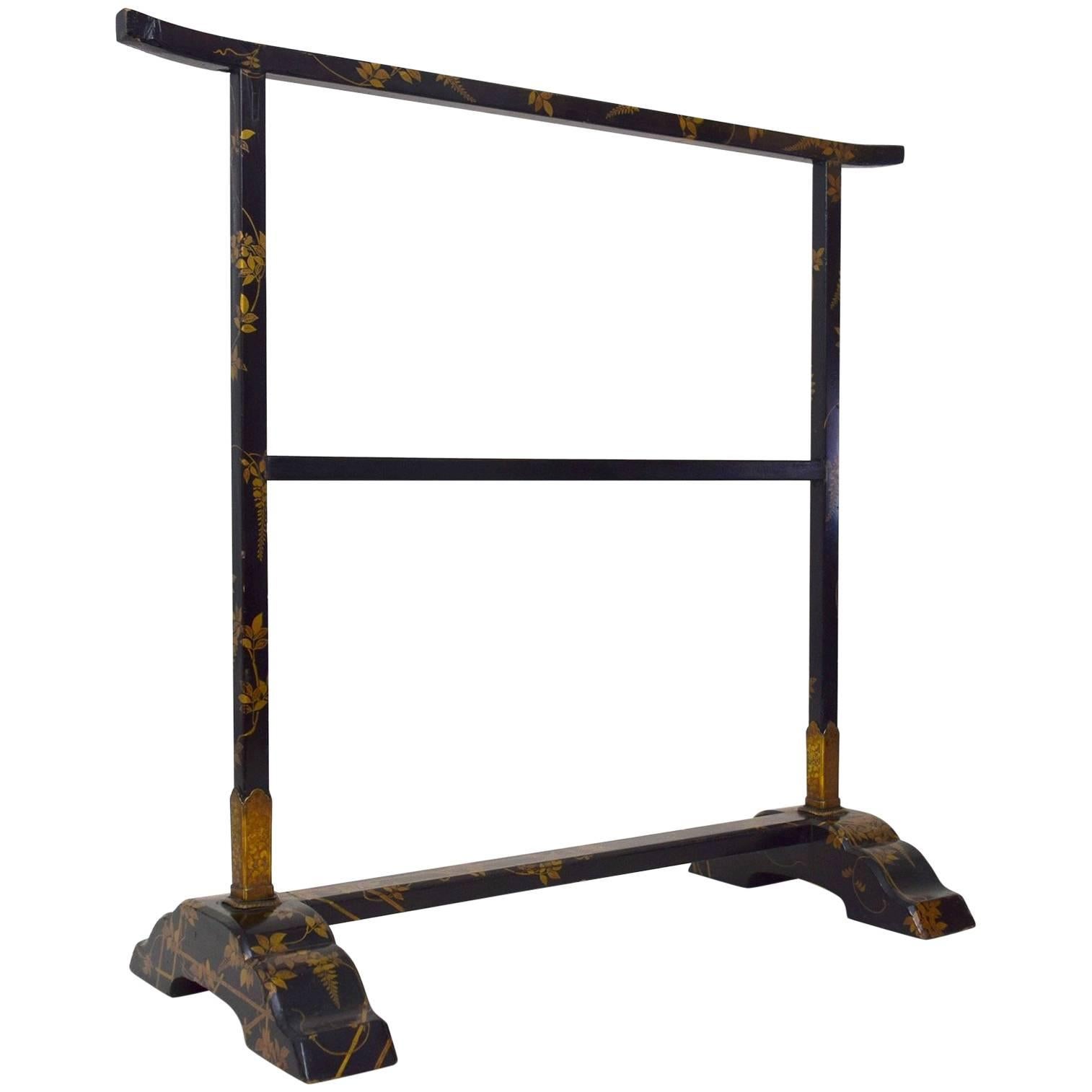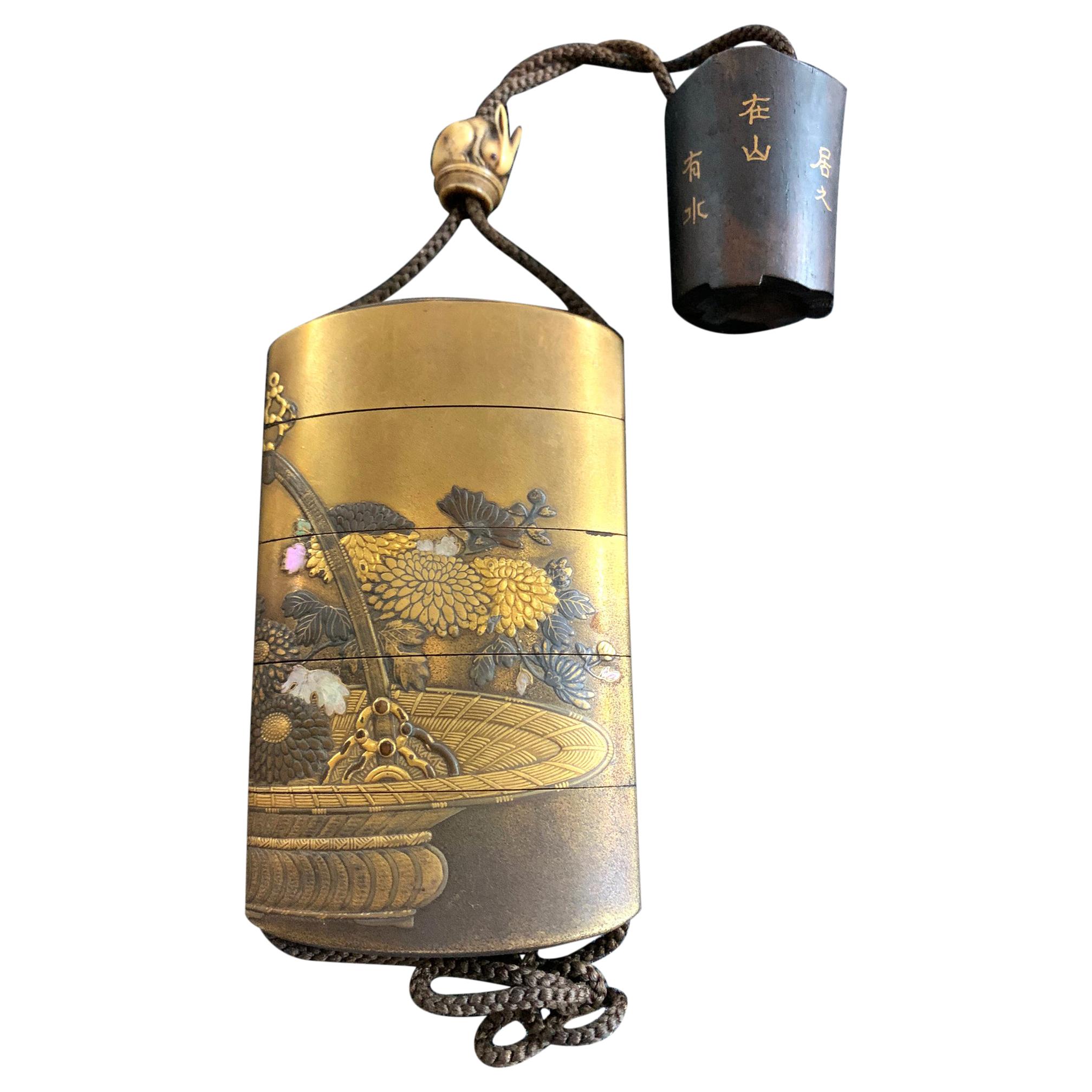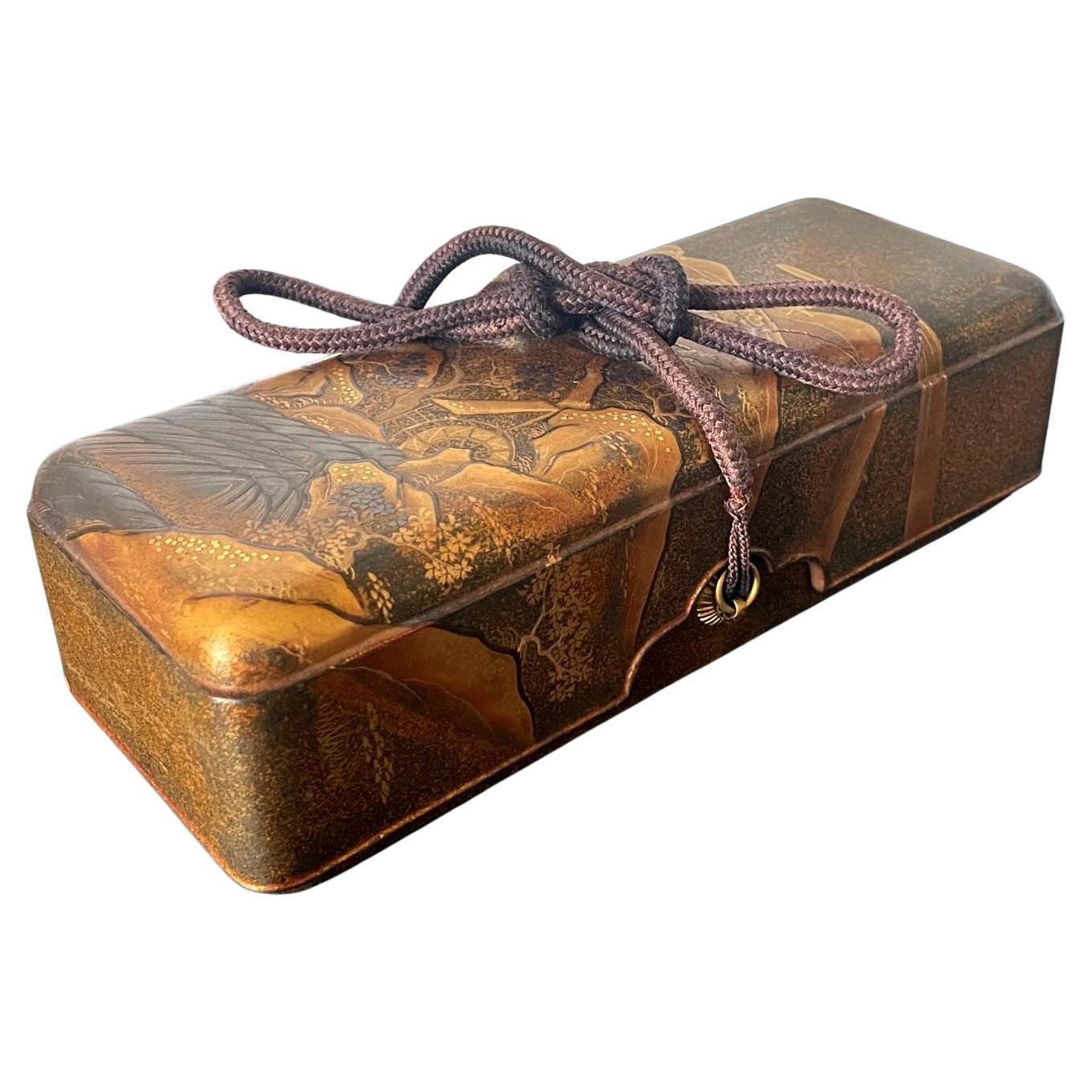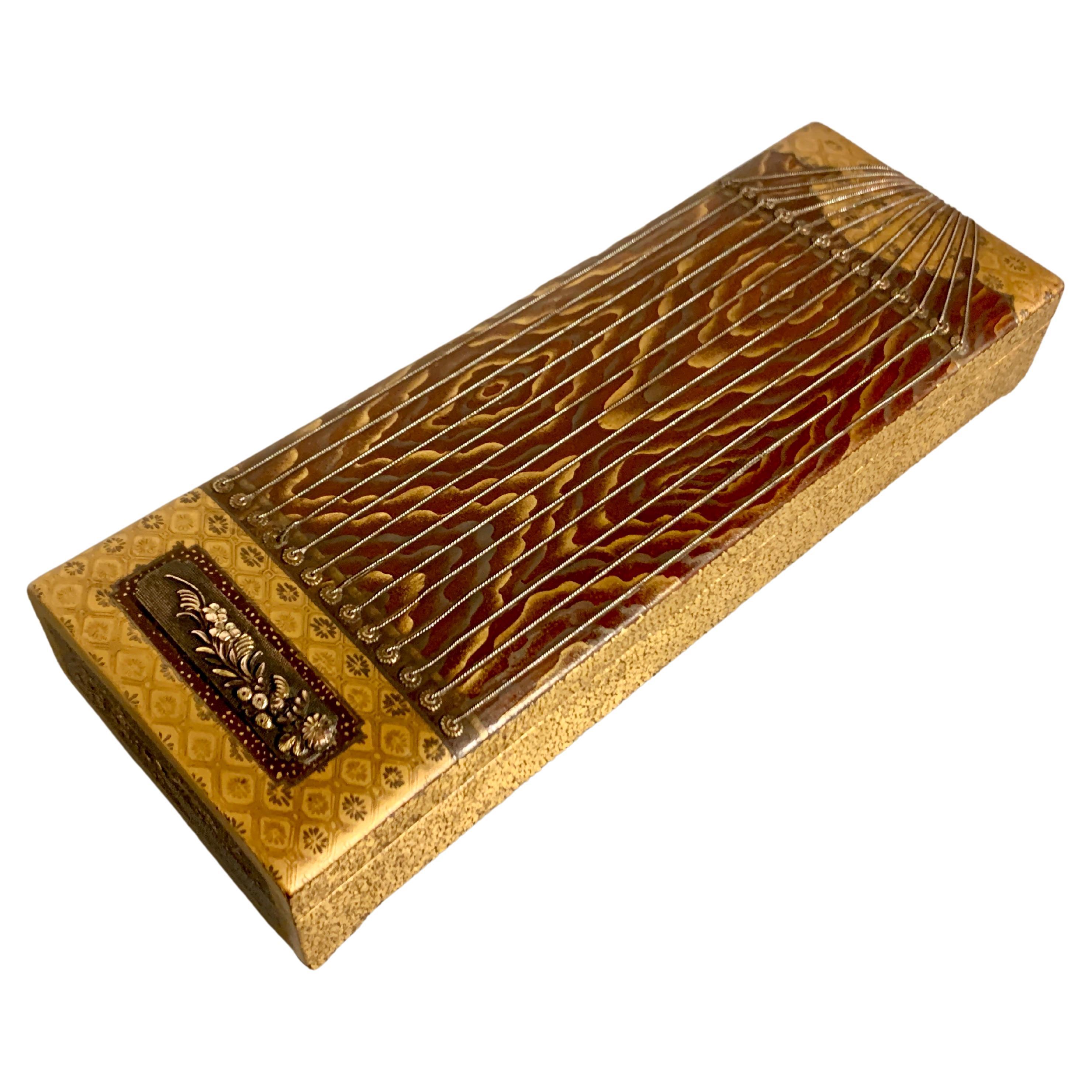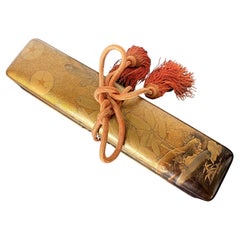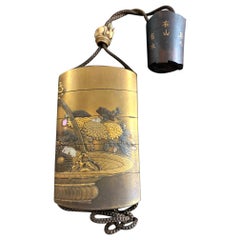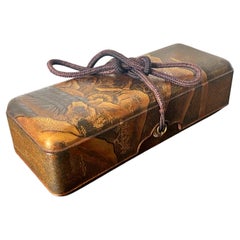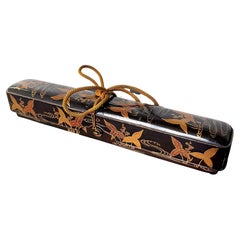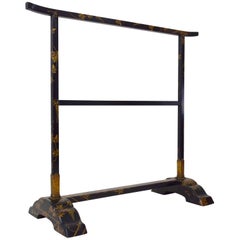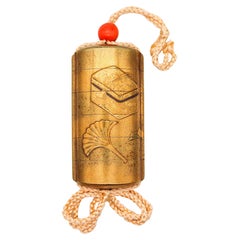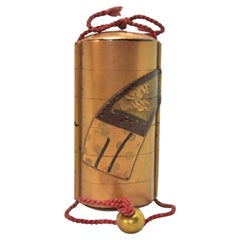Items Similar to Japanese Meiji Han Koto with Maki-e Lacquer Decoration
Want more images or videos?
Request additional images or videos from the seller
1 of 11
Japanese Meiji Han Koto with Maki-e Lacquer Decoration
$8,200
£6,221.97
€7,114.27
CA$11,453.18
A$12,734.37
CHF 6,649.19
MX$155,008.34
NOK 84,840.74
SEK 79,491.72
DKK 53,095.09
Shipping
Retrieving quote...The 1stDibs Promise:
Authenticity Guarantee,
Money-Back Guarantee,
24-Hour Cancellation
About the Item
A rare Japanese Koto made from carved Paulownia wood and lavishly decorated with lacquer Maki-e circa late 19th century of Meiji Period (1868-1912). The facade of the stringed instrument features beautiful gold takamaki-e and hiramaki-e decoration. The image showcases a pair of peacocks with splendid plumage perched on rocks by a stream among flowering peonies below flying butterflies. Radan (mother-of-pearl) inlays were used to highlight the tails feathers of the peacock. The ends of koro are decorated with chrysanthemum blossoms inlaid with jade colored hardstone.
For similar koto dated in the collection of the Metropolitan Museum of Art, see accession number 69.271.3.
The Koto is considered the national instrument of Japan. It originated from the Chinese Guzheng but developed its own tradition in Japan since the 8th century. It was traditionally played as a form of entertainment in the imperial courts. Traditionally made of paulownia wood and set with thirteen strings played by being plucked with three fingerpicks, tsume, worn on the first three fingers of the right hand. The Koto presented here is meticulously and luxuriously detailed with auspicious decoration of peonies and peacocks which represent worldly power and wealth in Japanese culture. Therefore, this koto was likely created as a ceremonial gift, not meant to be played regularly but rather admired for its beauty and symbolism.
- Dimensions:Height: 55 in (139.7 cm)Width: 9 in (22.86 cm)Depth: 3.5 in (8.89 cm)
- Style:Japonisme (Of the Period)
- Materials and Techniques:Wood,Lacquered
- Place of Origin:
- Period:
- Date of Manufacture:Late 19th Century
- Condition:Wear consistent with age and use. Minor losses. The facade is in fine condition with a few small losses of MOP inlays. Old stable crack on one sides and bottom; some small surface losses to edge of the other side. Strings mostly intact, bridges not present. Wood losses on the base. Not playable.
- Seller Location:Atlanta, GA
- Reference Number:1stDibs: LU945030467262
About the Seller
4.9
Platinum Seller
Premium sellers with a 4.7+ rating and 24-hour response times
Established in 2006
1stDibs seller since 2010
564 sales on 1stDibs
Typical response time: <1 hour
- ShippingRetrieving quote...Shipping from: Atlanta, GA
- Return Policy
Authenticity Guarantee
In the unlikely event there’s an issue with an item’s authenticity, contact us within 1 year for a full refund. DetailsMoney-Back Guarantee
If your item is not as described, is damaged in transit, or does not arrive, contact us within 7 days for a full refund. Details24-Hour Cancellation
You have a 24-hour grace period in which to reconsider your purchase, with no questions asked.Vetted Professional Sellers
Our world-class sellers must adhere to strict standards for service and quality, maintaining the integrity of our listings.Price-Match Guarantee
If you find that a seller listed the same item for a lower price elsewhere, we’ll match it.Trusted Global Delivery
Our best-in-class carrier network provides specialized shipping options worldwide, including custom delivery.More From This Seller
View AllJapanese Lacquered Gold Maki-E Naga Fubako Meiji Period
Located in Atlanta, GA
A Japanese lacquered wood Naga Fubako (a long box used to store document or large scroll painting), circa 19th century Meiji period. The rectangular box features an unusually deep lipped lid with slightly rounded corners, a conforming lower box with bronze medallion rings with tasseled...
Category
Antique 19th Century Japanese Meiji Lacquer
Materials
Wood, Lacquer
Antique Japanese Inro by Shigehide Edo Period
Located in Atlanta, GA
This exquisite four-case lacquered inro was dated to the latter part of 18th century to early 19th century (Edo period) and made by Shigehide. The opposite sides of the inro together features a lavish flower arrangement in a bamboo basket (ikebana). The detailed craftmanship was a true pleasure to behold. Mostly Takamaki-e (high relief) were used to texturize the delicate petals of the chrysanthemums, on which different shades of gold were used to create contrast. Raden (mother of pearl) shells were also used to highlight some leaves, rendering the piece an interesting balance of color and material. The interior was completed in a mottled gold finish. It was signed Shigehide on the bottom with a Kao. There is a small carved rabbit ojime bead...
Category
Antique Late 18th Century Japanese Japonisme Lacquer
Materials
Wood, Lacquer
Japanese Lacquered Maki-e Fubako Edo Period
Located in Atlanta, GA
A Japanese lacquered wood fubako (a box used to store document or small scroll painting), circa second half of 19th century late Edo period. The rectangular box features an unusually deep lipped lid with slightly rounded corners, a conforming lower box that is almost entirely covered by the lid which has two bronze medallion rings with tasseled...
Category
Antique 19th Century Japanese Edo Lacquer
Materials
Wood, Lacquer
Japanese Lacquered Maki-E Fubako in Kodaiji Style
Located in Atlanta, GA
A rare Japanese lacquered wood fubako decorated in Kodaiji maki-e style circa early 17th century the beginning of the Edo period, possibly early toward the end of the Azuchi-Momoyama period. The rectangular, long and slim box features a deep lipped lid with slightly rounded corners, a conforming lower box with two bronze medallion rings with tasseled...
Category
Antique Early 17th Century Japanese Edo Lacquer
Materials
Wood, Lacquer
Japanese Inro by Koma Koryu Edo Period
Located in Atlanta, GA
A four-case lacquered inro by Koma Koryu circa 19th century late Edo period. The inro features a pair of Chinese mandarin duck resting under a bundle of blooming irises on the pond. ...
Category
Antique 19th Century Japanese Japonisme Lacquer
Materials
Wood, Lacquer
Antique Japanese Lacquer and Inlay Table from Ryukyu Islands
Located in Atlanta, GA
A small square-form table with lacquer and intricate mother-of-pearl inlay design from Ryukyu Islands kingdom circa 17-18th century. Ryukyuan kingdom was used to be an independent is...
Category
Antique 18th Century Japanese Edo Lacquer
Materials
Mother-of-Pearl, Lacquer
You May Also Like
Elegant Japanese Edo Period Rack
Located in New York, NY
This refined object dates to the first half of the 19th century, and was probably used for obi, kimono sashes, which were hung over it. The gold decorations on the black-lacquered g...
Category
Antique 1830s Japanese Edo Lacquer
Materials
Lacquer
Japanese Lacquer Writing Box, Suzuribako, Edo Period, 18th Century, Japan
Located in Austin, TX
An exceptionally fine and unusual Japanese lacquer writing implements box, suzuribako, in the form of a zither, koto, Edo Period, 18th century, Japan. With a modern wood storage box,...
Category
Antique 18th Century Japanese Edo Lacquer
Materials
Gold, Silver, Copper
Japan 1800 Edo Period Six Drawer Inro In Lacquered Gilt Wood With Utensils
Located in Miami, FL
Japanese Inro from the Edo Period (1603-1867).
Beautiful Inro, created in Japan during the Edo period (Shogunate), circa 1800. It was carefully crafted in carved precious wood with ...
Category
Antique Early 1800s Japanese Edo Lacquer
Materials
Coral
$2,600 Sale Price
20% Off
19th Century Japanese Inro with 5 Lacquered Wood Compartments
Located in Marseille, FR
19th Century Japanese inro with 5 lacquered wooden compartments, 93 x 50 x 30 mm in size. Weight 59.2 g.
Additional information:
Material: Lacquered ...
Category
Antique 19th Century Japanese Snuff Boxes and Tobacco Boxes
Materials
Wood
Qing Dynasty Red Lacquered Scroll Box with Distressed Gold Chinoiserie Décor
Located in Yonkers, NY
A Chinese Qing dynasty red lacquered lidded scroll box from the 19th century with distressed gold chinoiserie motifs. This exquisite Chinese Qing dynasty red lacquered lidded scroll ...
Category
Antique 19th Century Chinese Qing Decorative Boxes
Materials
Wood
Antique Chinese Scroll Box
Located in Bridgeport, CT
Stained leather covered wood in deep oxblood and dark brown tones. With three stitched plaques with raised characters on the front. A brass mount with lock on the front (lacking the ...
Category
Antique 19th Century Asian Ming Scholar's Objects
Materials
Leather, Wood
More Ways To Browse
8th Century
Japanese Butterfly Art
Mother Of Pearl Inlay Lacquer
Used String Instruments
Asian Feather Art
Japanese Jade
Japanese Wood Inlay
Japanese Peacock
Maki E
Chinese Furniture With Mother Of Pearl Inlay
Japanese Lacquer Pearl
Japanese Lacquer And Mother Of Pearl
Chinese Hardstone
Chinese Lacquer Mother Of Pearl
Japanese Mother Of Pearl Art
Chinese Lacquer And Mother Of Pearl
Chinese Inlay Lacquer Furniture
Antique String Instrument
